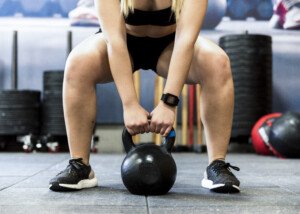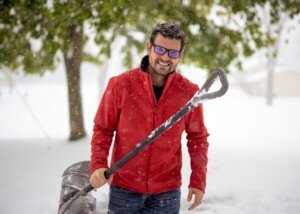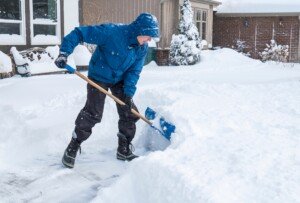
I’m a 50-something woman and can shovel heavy wet snow like a beast and never feel back pain thanks to 3 exercises.
Not only have I been a personal trainer, but I’ve been lifting weights for years — and have done a lot of snow shoveling — so I’m going to strongly recommend the three best exercises for this “back wrenching” task.
The act of shoveling snow is actually a fusion of all three of these exercises. Before I go on, I need to emphasize the importance of proper form during snow shoveling.
When doing any kind of resistance-based activity, correct form is crucial – whether that activity is being performed in a gym to get stronger or build muscle, or whether the action is being done to clean something up or transport heavy objects.
Shoveling snow, especially the heavy wet kind of snow, involves cleaning up and transport of a heavy object.
The reason that so many people feel drained and suffer low back pain within minutes of shoveling snow is because of the resistance that’s being transferred to their low back.
However, intense burning in the thighs is also a typical complaint.
When shoveling, one must minimize the forces being absorbed by the low back. These erector spinae muscles are not designed for high force absorption.
Instead, they are stabilizers; their job is to stabilize the spine.
Correct Snow Shoveling Form
• Bend with the legs as much as possible.
• Keep back as upright as possible.
• As you go down to scoop and then raise your body to toss the snow, bend with the legs (mini squats) rather than pivot at the low back.
If your body is very well-trained with the deadlift, kettlebell swing and your favorite variety of squats, you will be able to effortlessly shovel snow – especially if you have good cardiorespiratory conditioning.
How to Do the Deadlift
• Stand over a barbell that’s on the floor.
• Keeping the lower back arched, back as upright as possible, bend at the legs and grab the bar with straight arms.
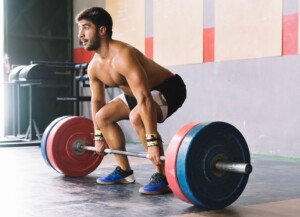
Freepik.com
• Depending on your body proportions, your back may be close to parallel by the time your hands reach the bar.
• However, make the necessary adjustments with your legs do that your shoulders are always ABOVE your hips.
• As you begin lifting, your hips should NEVER rise above shoulder level.
• Never round the back.
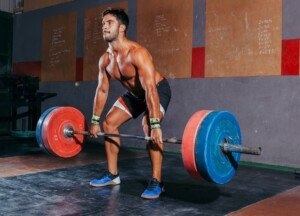
• Straighten your body, barbell in hands, arms straight, then lower it to the floor, reversing the movements that you used to lift the weight.
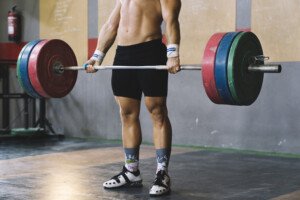
• Books have been written on proper deadlift form, and there are variations of positioning, but there are the basic bullet points to get your started.
How to Do a Kettlebell Swing
• Stand with feet shoulder width apart, holding the kettlebell with both hands, arms straight.
• Bend legs and swing kettlebell between legs, bending at your hips.
• Never round your back.
• Swing the kettlebell a little through your legs, then swing it upward, arms parallel to the floor.
• Repeat, controlling as much as possible the down-swing.
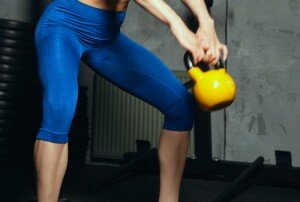
Shutterstock/The Faces
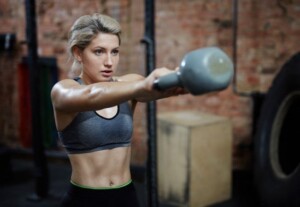
Freepik pressfoto
How to Do a Squat
• There are many variations.
• The rule for all variations is to never round the back!
• Keep the lower back arched.
• The two-legs-simultaneous squat need not go past parallel, meaning, butt lower than knees.
• However, go to at least parallel (thighs parallel to the floor). This is the half-squat position.
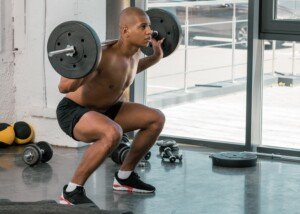
Depositphotos.com
• Never let your heels lose contact with the floor. This is a common mistake.
• If you can’t get parallel (two legs simultaneous) without feeling you’ll fall backwards, WIDEN your stance and slightly point your feet outward.
• Another common mistake is using too much weight, preventing the half-squat position.
It will take some time to become strong in all three of these exercises, which are truly the best for preventing pain from shoveling snow.
But if you begin these three exercises in the springtime, you’ll have all spring, summer and fall to get conditioned and strong for the next snow shoveling season.
I can go on and on regarding all sorts of nuances, such as how many times a week to do these three exercises, how many sets and repetitions, etc., but the topic of this post is the three best exercises for preventing pain and discomfort from snow shoveling.
 Lorra Garrick is a former personal trainer certified through the American Council on Exercise. At Bally Total Fitness she trained women and men of all ages for fat loss, muscle building, fitness and improved health.
Lorra Garrick is a former personal trainer certified through the American Council on Exercise. At Bally Total Fitness she trained women and men of all ages for fat loss, muscle building, fitness and improved health.
.

